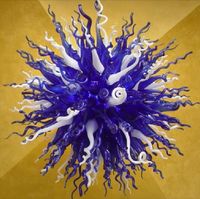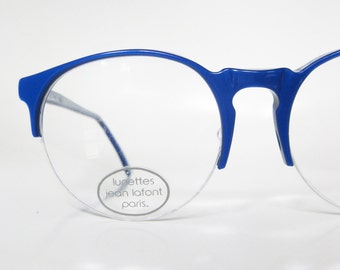

The only drawback to the TM 2000 is its high production cost. Laboratory tests show that the protection this lens gives against harmful UV rays is even more than required by government safety guidelines. The lens is tested for impact by dropping a 1 inch steel ball from a height of 50 inches.

The TM 2000 is an optically correct, emerald-green glass specially produced in small precise runs using rare earth materials and platinum lined ovens. The TM 2000 virtually eliminates orange glare and allows you to clearly see the welding and brazing process on aluminum, cast iron, stainless, etc. He patented the lens and went into production.
#Cobalt glasses eye trial#
After much trial and error, he developed a prototype for the TM 2000 lens and finalized the design after five years of using the prototype daily in the shop environment. He tried glassblowers' eyewear and experimented with many different combinations. He searched for years for good protective eyewear that would allow a clear view of the welding process. He heard all the myths and legends surrounding the mysterious process of gas welding aluminum. Kent entered the world of automobile, aircraft, and boat restoration in 1970. If not, then perhaps you should think about how much your eyes and cheap eyewear are worth to you. If the stacker has his sandwich safety-tested to meet current standards, and has suitable product liability insurance, then the stackee shouldn't have to worry. Mix-and-match or stacking up a lens sandwich might just be dangerous baloney.

The TM 2000 is also suitable for ordinary torch welding on steel, and 4130 Chromemoly, (which the plastic lenses are not rated for), in addition to welding stainless, cast iron, and monel. No one has complained about the TM 2000 Lens, or brought one back, and thousands have been sold worldwide.ĭurability should also be considered, as glass is much more scratch-resistant than plastic, and perhaps most important, glass holds its optical requirements indefinitely when exposed to bright light, something plastic simply cannot do. I don't weld often enough to spend the money. The other stuff works about a third as well as TM 2000.ģ. I wish I would have bought yours first, instead of wasting my time and money.Ģ. Many customers have come back to us and said:ġ.

It completely eliminates sodium orange, and meets ANSI Z87 safety requirements for bright light, ultraviolet, infrared, blue light, and impact for a Special Lens. In 1989, TM Technologies finished prototype work on their new TM 2000 eyewear and found it superior to anything thus far. By the 1990s however, glassblowers' cataracts caused didymium to be suspect. In the 1960s, didymium glasses were developed for glassblowers, who also face sodium flare when the glass is heated (glass = silica sand = seabeds = salt). When eye damage from these became prevalent (1980), they were quietly withdrawn from the market. Then cobalt melters' glasses were borrowed from the steel foundries. Until WW2, there was no safety eyewear for flux welding and brazing. When the torch heats the flux, it incandesces, giving off a brilliant yellow-orange flare, just like the one you get when dripping salt water onto a gas burner. What is this, you may ask? Well, many welding and brazing fluxes contain alkaline metal salts, such as sodium chloride, potassium chloride and fluoride, and lithium chloride. Special safety eyewear is required to cut through, defeat, or eliminate sodium orange flare. Lenses are available in Shade 5 in the following forms: Spectacles, 2 x 4.25" rectangles, and 50mm rounds. The TM 2000 ® Eyewear for Sodium Orange Flare ReductionĪllows you to clearly see the welding and brazing process on aluminum, cast iron, stainless, and any other flux-based gas welding process that creates an orange flare when welding.


 0 kommentar(er)
0 kommentar(er)
